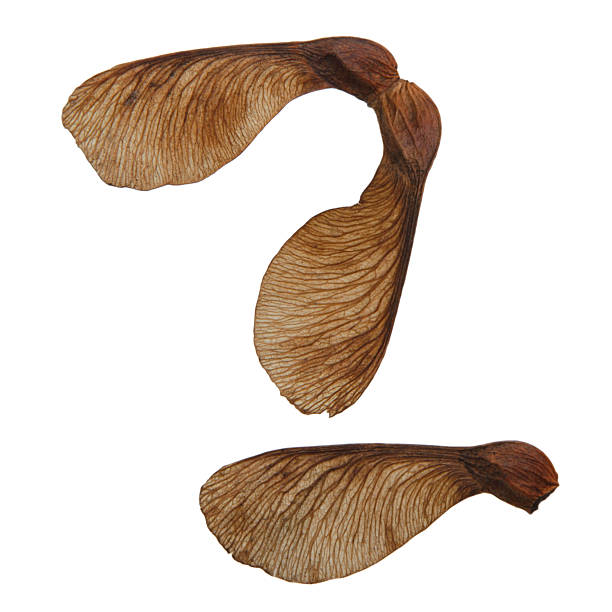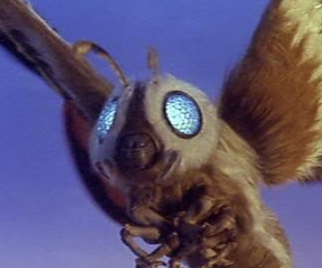How does a tree (or any plant, really), know to evolve to produce a delicious fruit or a poison berry, a seed inside an impenetrable shell, or invent a type of flying machine, in order to reproduce? (Each of these examples exists in my backyard)
How do they receive feedback about their evolutionary experiments? How do they know it worked/failed. [10]

Random mutation. If it reproduces successfully, those genes pass on. If successful enough, it could become the dominant variety. If not successful, that variety will be a small population or die out. That’s all there is to it.
If it is successful, but isn’t dominant enough to replace the existing variety then we have the start of a new species!
I thought you were going to say a tree civil war.
How does a tree evolve a wing? - not to fly, but to propagate.
Parallel evolution makes sense to me in the animal kingdom, but a tree evolving winged vehicles for their seed is just mind blowing when I think about it.
-
berries and wings don’t just randomly appear out of nowhere from year to year do they?
-
do we have any physical records of plants actually evolving these different methods like we do with bone structure of primates evolving?
If a tree mutates and it produces a seed that is slightly flatter than its competition, then that seed will fall farther and the tree will be slightly more likely to reproduce over its competition. Repeat this for several million generations over millions and millions of years.
How long is a generation when trees can be several thousand years old?
A generation just has to be the age gap between a plant and a plant from any of its seeds. So if a tree can start to flower and drop seeds around year 3, then it’s as minimal as a 3-year gap between “generations”.
if a tree can start to flower and drop seeds around year 3
Did you just make this up, or is it actually true for these kinds of trees that can be several thousand years old?
Number was plucked out of my ass. But sure, let’s look at a redwood and see when they start reproducing.
The Sierra Redwood can reproduce sexually (seeds in cones) as early as 24 years old, but one source I found said that seeds are usually not high-quality until the tree is 200+ years old. It also takes about a 2-year maturation period within the cone before being ready for planting. Other types of redwoods can reproduce asexually, which may have an effect on the rate of expression of the mutated genes.
Sierra Redwood can reproduce sexually (seeds in cones) as early as 24 years old, but one source I found said that seeds are usually not high-quality until the tree is 200+ years old.
That’s quite interesting. And impressive, too!
Thank you for looking it up.
It doesn’t matter how old the trees can ultimately live, just how long it takes for one of its offspring trees to grow enough to then itself make more offspring. And in some species of trees, that can be as little as 3 years
It doesn’t matter how old the trees can ultimately live
Thinking about it has given me the hint to ask this question :)
I’m not arguing, I wanted to learn something.
Do your parents have to die for you to be the next generation? No. An organism and it’s offspring are very frequently alive at the same time and apart of different generations. Once an organism has offspring, a new generation exists. So however old an is when it can reproduce, that is the length of a generation for that species. It has nothing to do with how long said organism can live.
You might be underestimating the timescales involved.
For example, grass - super simple organism, right? Should have appeared early on? No, dinosaurs appeared before grass did. But when the first grasses did evolve, wow, they were successful on a scale that is hard to overstate.
The beauty of sexual reproduction, from an evolutionary point of view, is that by its very nature, it allows many experiments to take place at once. The success criteria of each experiment is how many babies can the subject make.
Little wings evolve on seed pods for the same reason they evolved on anything else. For whatever reason, each step along the way made them a tiny bit more successful at having babies than those without.
Maybe a little spike makes them slightly less likely to be eaten, a bigger spike less likely still. A flatter spike helped them catch the wind and scatter further afield, and broader ones further still.
There’s no feedback needed for individuals in this system - it’s literally a numbers game based on who/what can make the most babies. They’re the ones who, millions of years down the line, end up winning.
if you want a contemporary and highly entertaining way of exploring evolution, check out baba brinkman’s rap guide to evolution
https://www.youtube.com/channel/UCz9Qm66ewnY0LAlZlL4HK9g
its readily available on the net and its an excellent and fun way to contemplate many of the questions you have.
berries and wings don’t just randomly appear out of nowhere from year to year do they?
They do! Any useful trait is likely to appear more than once in different species.
-
In addition to what other people said, I’ll focus on the delicious fruits.
A lot of wild fruits are awful when raw. Crab apples are a good example - small, tough, excessively tart. But then you get humans picking the least awful of those fruits, and spreading their seeds (sometimes without a thought, sometimes on purpose), you’re effectively selecting the best-tasting ones. And across multiple generations, the fruit goes from barely edible to passable to okay-ish to good-tasting.
In other words, plenty tasty fruits out there are not the result of trees “trying” to propagate themselves better. They’re the result of weird monkeys doing artificial selection across millenniums. Or even through the centuries, as this Renaissance painting shows:
/https://tf-cmsv2-smithsonianmag-media.s3.amazonaws.com/filer/17/a3/17a371ac-8812-4faf-ac23-e3a3ce9ed664/stanchipainting_edit.jpg)
Check the bottom right - those are watermelons. Granted, watermelons aren’t from trees, but the reasoning is the same - in just three centuries or so watermelons went from “90% styrofoam with some good bits” to big balls of juice. Why? Human intervention.
And thank goodness! I love watermelon.
old age water melons looks like the devil fruit
you mean aliens 😯 no way , let me get my tin foile hat , alien intervention equals humanity ? coincidence ? hmmmmm
They don’t know. They exist because their traits allowed them to survive better than other traits. If an evolution fails, they cease to exist. What’s left over is what you get to see
what a weird tasting fruit , fuck this plant species get this mf out the gene pool
Damsons still exist tho
And crabapples
Both make good jams, gins and desserts
There is no knowing or feedback.
Mutations are random and there are many more failed mutations than successful ones.
You only see the successful species for that very reason, the failed ones have not been able to compete or pass their genes on at an appropriate rate.
the failed ones have not been able to compete or pass their genes on
Well, that’s feedback.
That the feedback mechanism that makes the process work. What is hard to understand is that it “informs” a population, not any individual.
It’s feed back only in the sense that it can be seen as a success or a failure by an independent observer.
It’s not like a tree can see that last year’s seeds weren’t very good and try a different mutation this year.
Genes are not self aware, mutations do not have an end goal and survival simply comes down to chance.
It’s the same as any other evolutionary process. Those who survive and reproduce the most carry their genes to the next generation; those who are less well adapted don’t reproduce as much and over the generations their genes get removed.
Say you have a bush with berries. Some bushes make sweeter berries than others. Let’s say those with the sweetest berries will attract more birds and animals who will eat the berries and scatter the seeds further away. The sweeter bushes are getting more lotto tickets for the next generation, the sour ones not so much. Repeat over time and eventually the sour ones will be gone.
The same can be applied to any other trait. It depends on the pressure of the environment they live in.
It’s not that complex.
A mutation happens. It can result in either a disadvantage that prevents the plant from surviving to reproduce or an advantage that helps the plant survive to reproduce.
There’s no “knowing” involved. There is no intent on the part of the plant. It’s just random. You’re seeing the descendants of the plants that got an advantageous mutation.
What you’re not seeing in your yard are the billions of different plants that never survived because their mutation was a disadvantage.
“What survives survives, what doesn’t doesn’t.”
As others have said, evolution doesn’t really work that way: an individual organism doesn’t make changes to suit its environment. Offspring aren’t carbon copies of their parents, there’s variation of pretty much every attribute. Most attributes don’t really impact survivability, but sometimes they do. If certain things tend to result in an organism surviving to reproduce better than other things, those traits get reinforced and are more likely to be passed on. Over lots and lots of generations, you can end up with pretty much every organism in that species having that trait, and that trait getting more and more pronounced.
In our effort to disillusion people of the idea that evolution has a purpose or conscious hand, we over-simplify things, though. Plants actively (but not consciously) shape their own evolution through complex molecular and genetic mechanisms. They can respond to environmental stresses by altering their DNA methylation patterns, potentially priming future generations for similar conditions. Plants also engage in niche construction, modifying their surroundings in ways that influence their evolutionary trajectory. For instance, they can change soil chemistry through root exudates, creating new selective pressures for themselves and their offspring. Plants participate in intricate co-evolutionary relationships with pollinators, herbivores, and other organisms. These interactions create dynamic fitness landscapes that drive reciprocal evolutionary changes. While not “inventing” traits in a deliberate sense, plants possess sophisticated genetic tools - such as whole genome duplications, transposable elements, and adaptable gene networks - that allow for rapid evolutionary innovations. These mechanisms enable plants to continually adapt and evolve, even without conscious intent or direct feedback.
I’m not familiar with those things but, if that’s all accurate, aren’t those abilities themselves things that were naturally selected for?
Plants with more flexible and responsive genetic systems were better able to adapt to changing environments and thus more likely to survive and reproduce, so yeah. However, the basic building blocks of these systems - DNA replication, gene expression, and the fundamental biological processes arose from simpler chemical and physical interactions that were likely governed by principles of self-assembly and thermodynamics. The primary drivers are different at different levels of abstraction and complexity, and there’s dynamic interaction across levels.
Thermodynamics -> Natural Selection -> Responsive (Epi)Genetics -> Memetics -> Metamemetics (probably?)
We “boil things down” to Natural Selection or Thermodynamics as is convenient for communication, but the higher levels affect the lower as well. So we can’t really reduce them like that without losing important information.
It doesn’t. The fruit that gets eaten gets to make more via the spread seeds. The plant that’s bitter doesn’t get eaten before it can go to seed. It’s not more complicated than that.
How do they know it worked/failed.
A lot of answers here, but I think what’s still missing is the most intuitive. The plant that sent the seed doesn’t know, rather its offspring does - by simply surviving. The species as a whole “knows” by whatever works.
How do they receive feedback about their evolutionary experiments? How do they know it worked/failed.
They’re not performing experiments, mutations are random and they either help the plant survive/reproduce, make it harder to do so, or have no appreciable effect. If it helps the plant, more of them will survive and reproduce, meaning more of the plant with that mutation will be more common. If it hurts, then it will be less common.
I’m with you. My wife has REALLY gotten into plants in the last year or so, and it amazes me how “smart” they are.
Obviously, everyone here is right. There is no intelligence, just genetics, but watching my morning glory wall climb the rope net to the roof of the house just blows my mind.
It’s crazy to think about all the trial and error over the centuries that it took for a simple flower to develop little sensor hairs that explore its surroundings and wrap itself around anything in range.
If, over a long time period, that tree’s particular characteristics lead to the species surviving, then it worked.
If it doesn’t, then the species dies out.
There’s no feedback, other than whether or not the species continues to exist.
How does it design a uni wing device to carry its seed to the earth?
as, for example an elm or maple? a random mutation may have provided a small spur to a seed. the spur changed the trajectory of the falling seed and may have allowed it to fall further from the parent plant and into a more ideal growing environment or simply further afield, which would allow it to slightly out-complete others plants.
if this change proved sucessful over longer periods of time, then the mutation would likely get more pronounced as long as the mutation continued to improve the plants fitness for its environment. fast forward 100,000 years later and environment pressure combined with inheritability and mutation have given you seeds with glide wings.
Makes sense. I realize the first part of the Q was simplistic. And I should have known (I did) the answer. It’s the design I’m most perplexed by - not the why, the how. I guess this would be the simplest way to explain it.
Still, that birds, insects, and trees, all have wings… It’ll never not be mind blowing.
You could look up some videos on “mutation design” which is a stochastic design method, which is basically used to design structures (like drone bodies) by using random mutations. It really shows how evolution works in real time.
How do you make eggs or sperm?
Taste and poison are easy to account for, it’s way weirder to see creatures that die immediately after sex.





